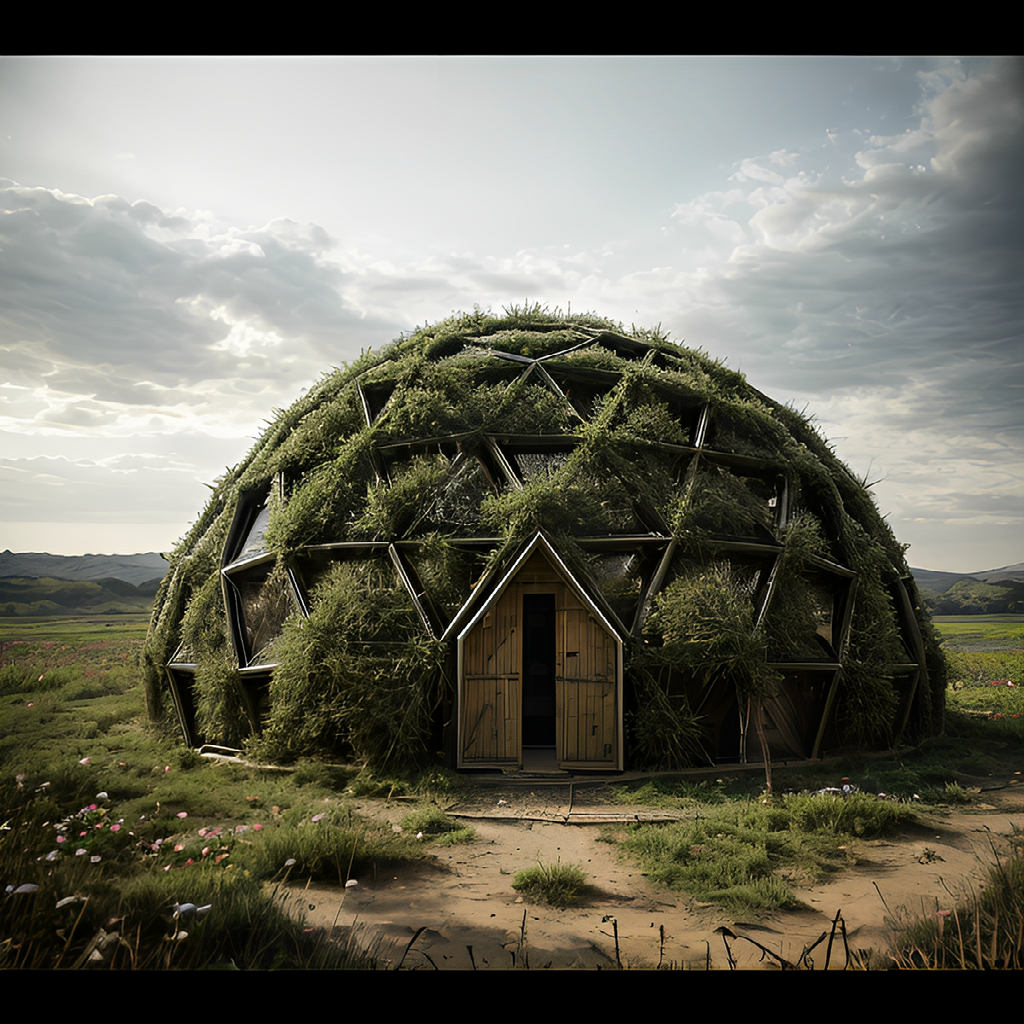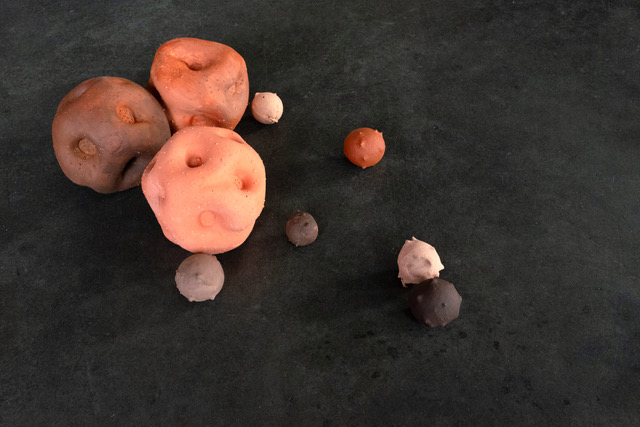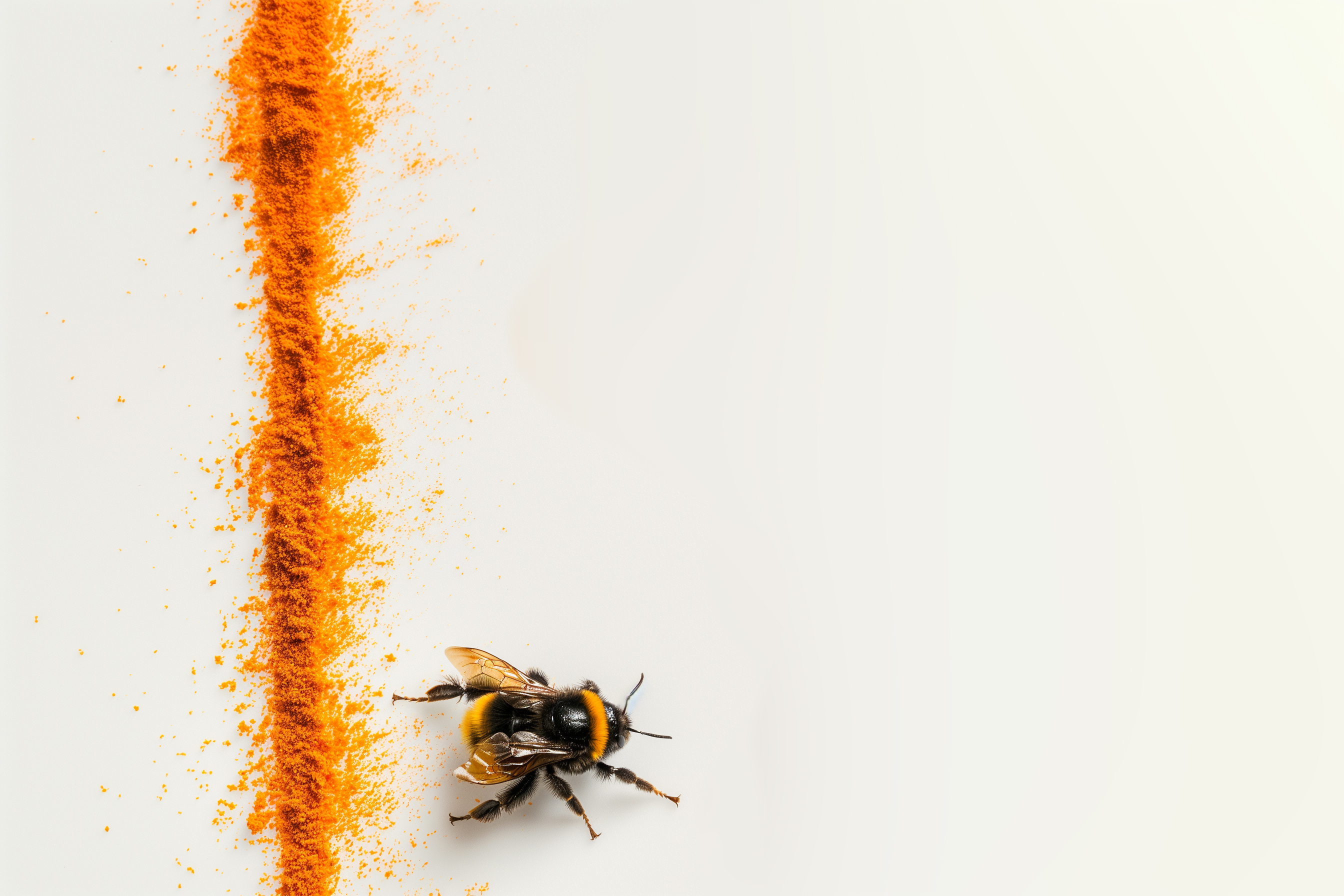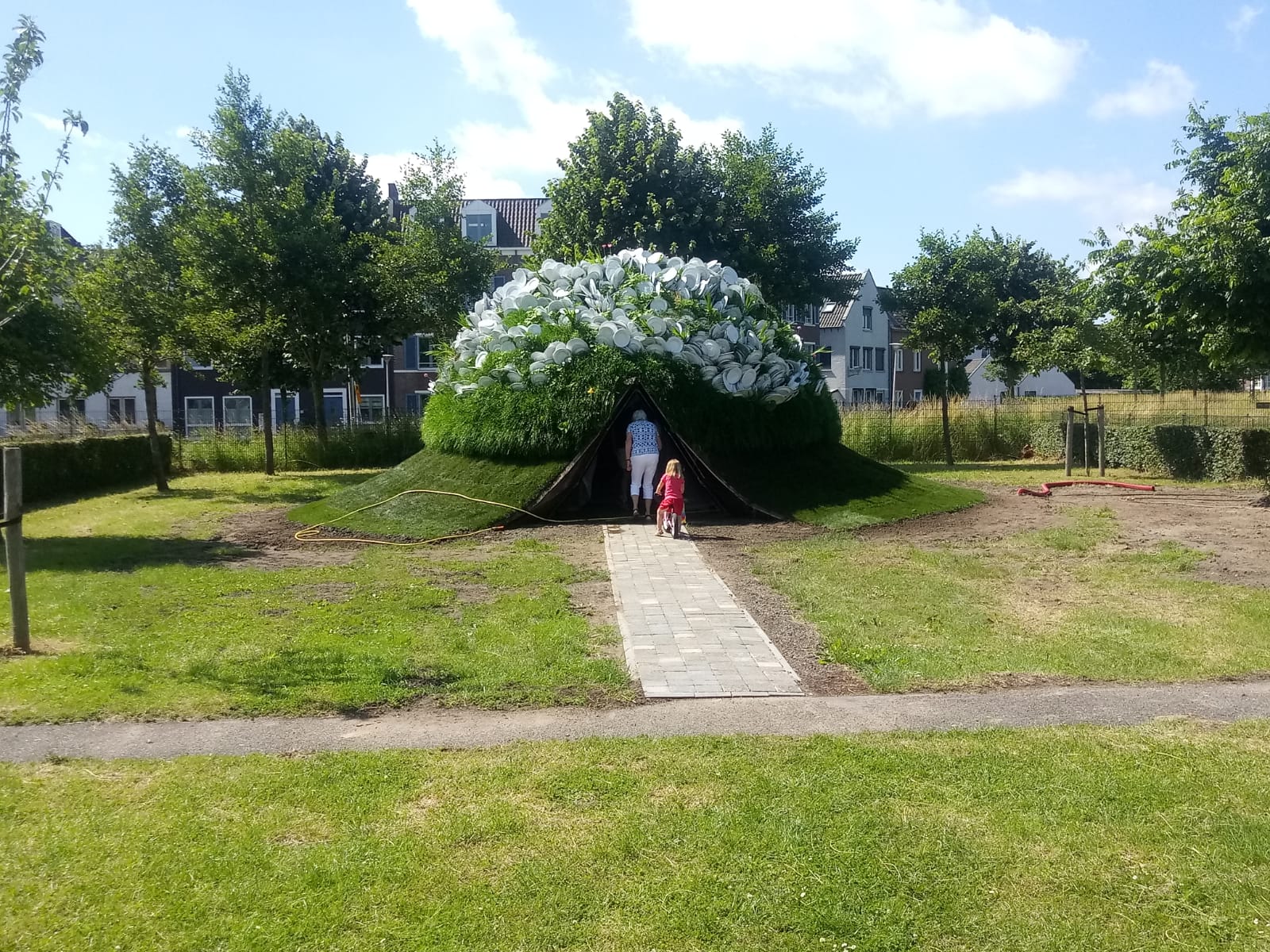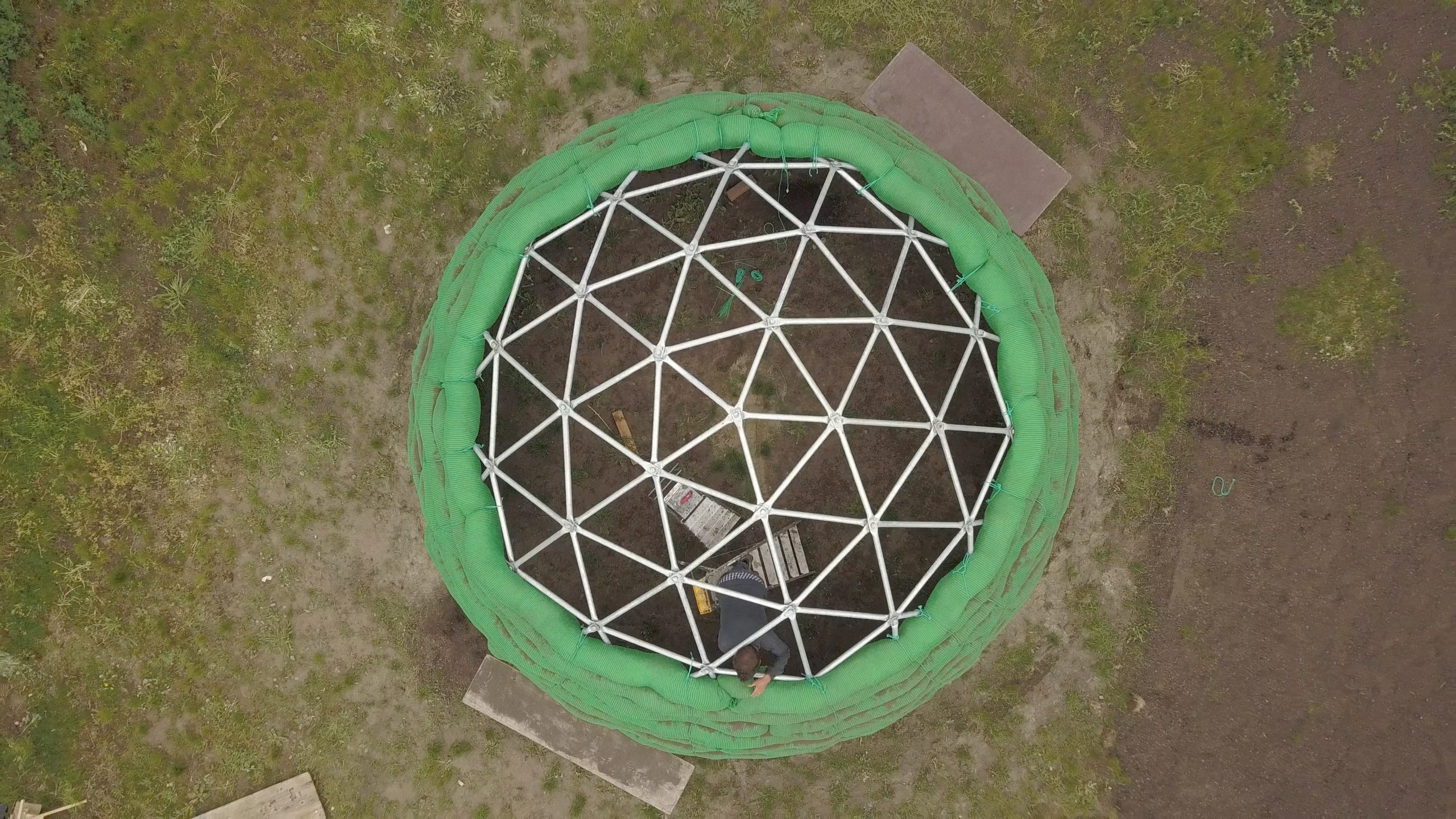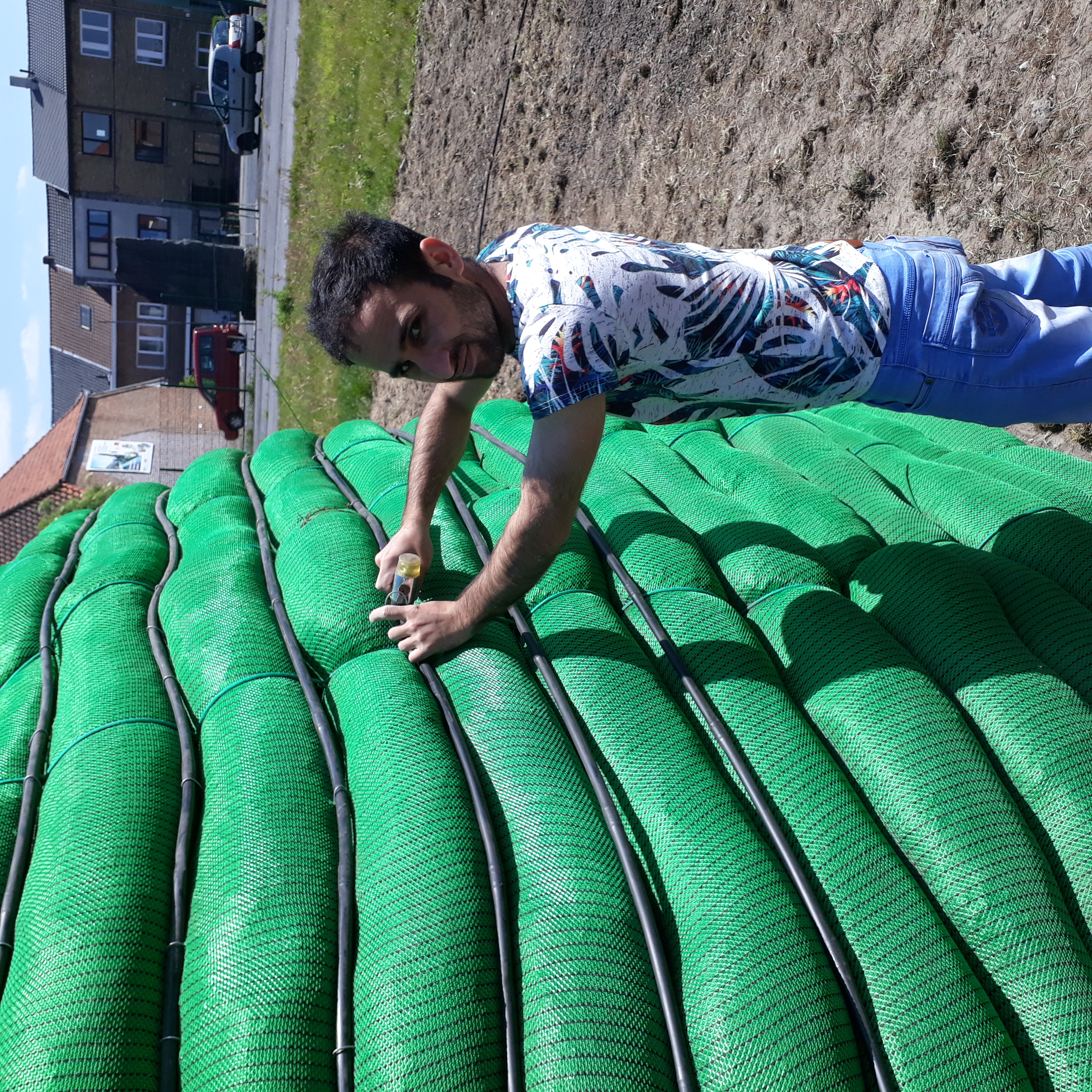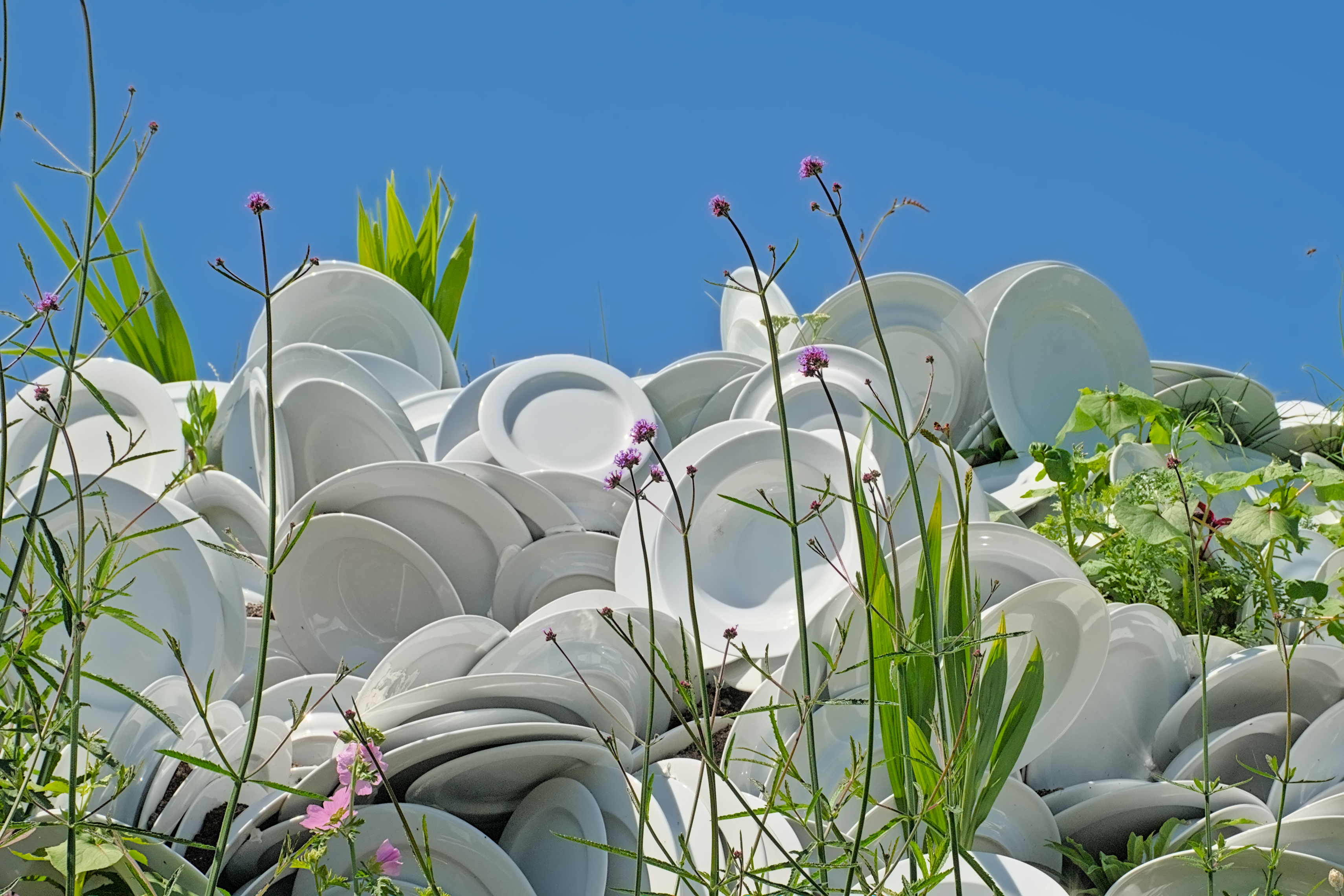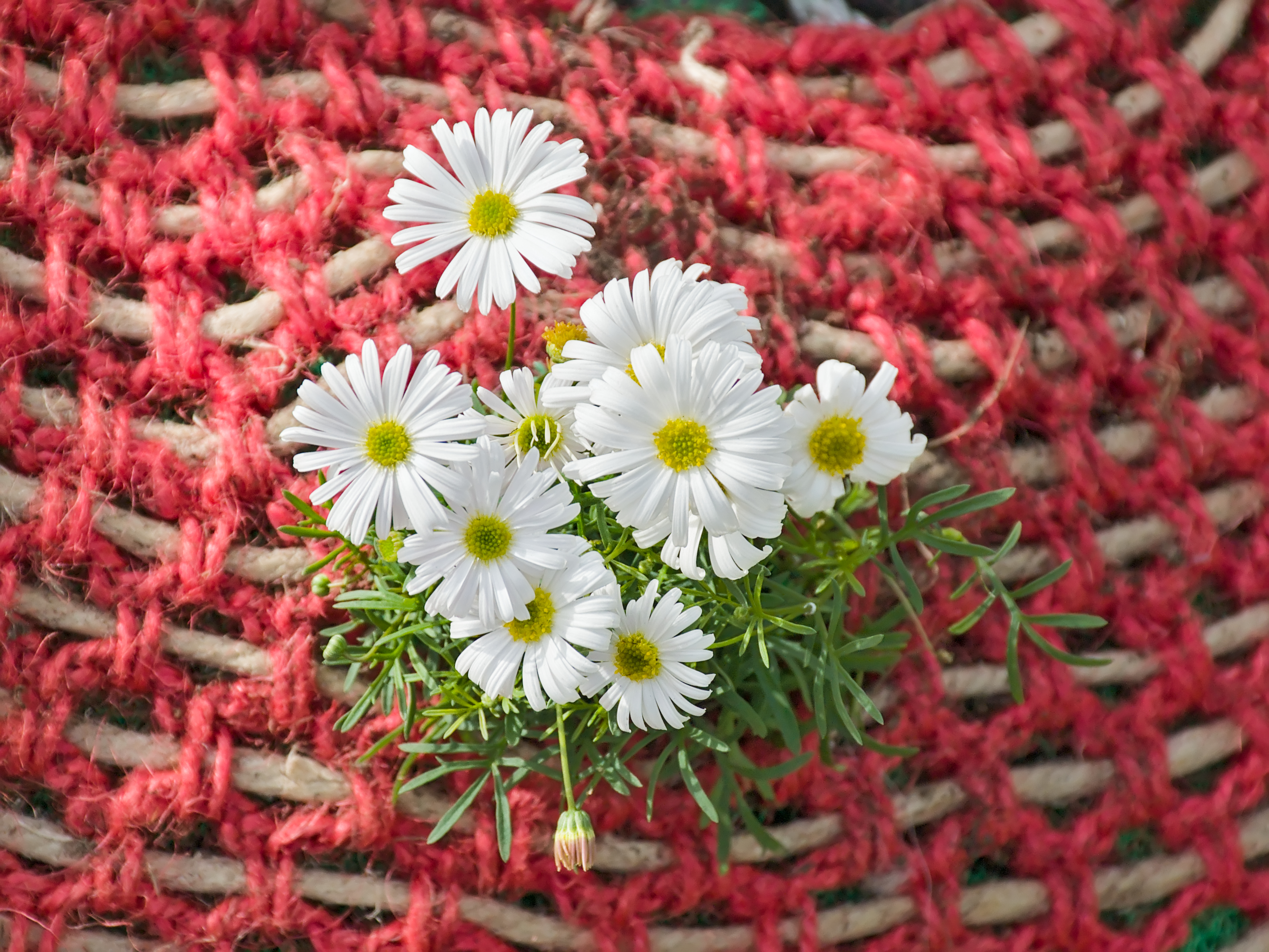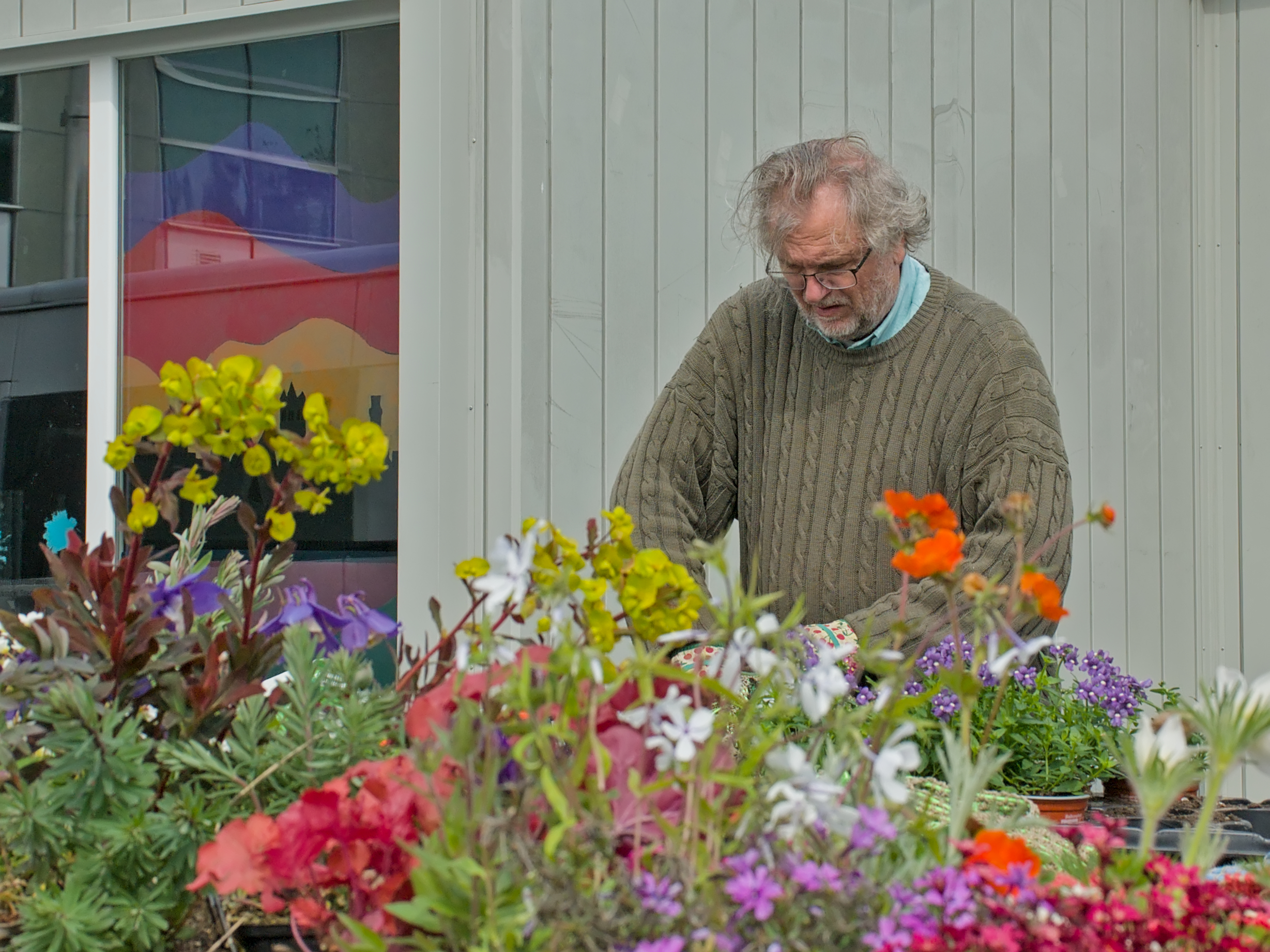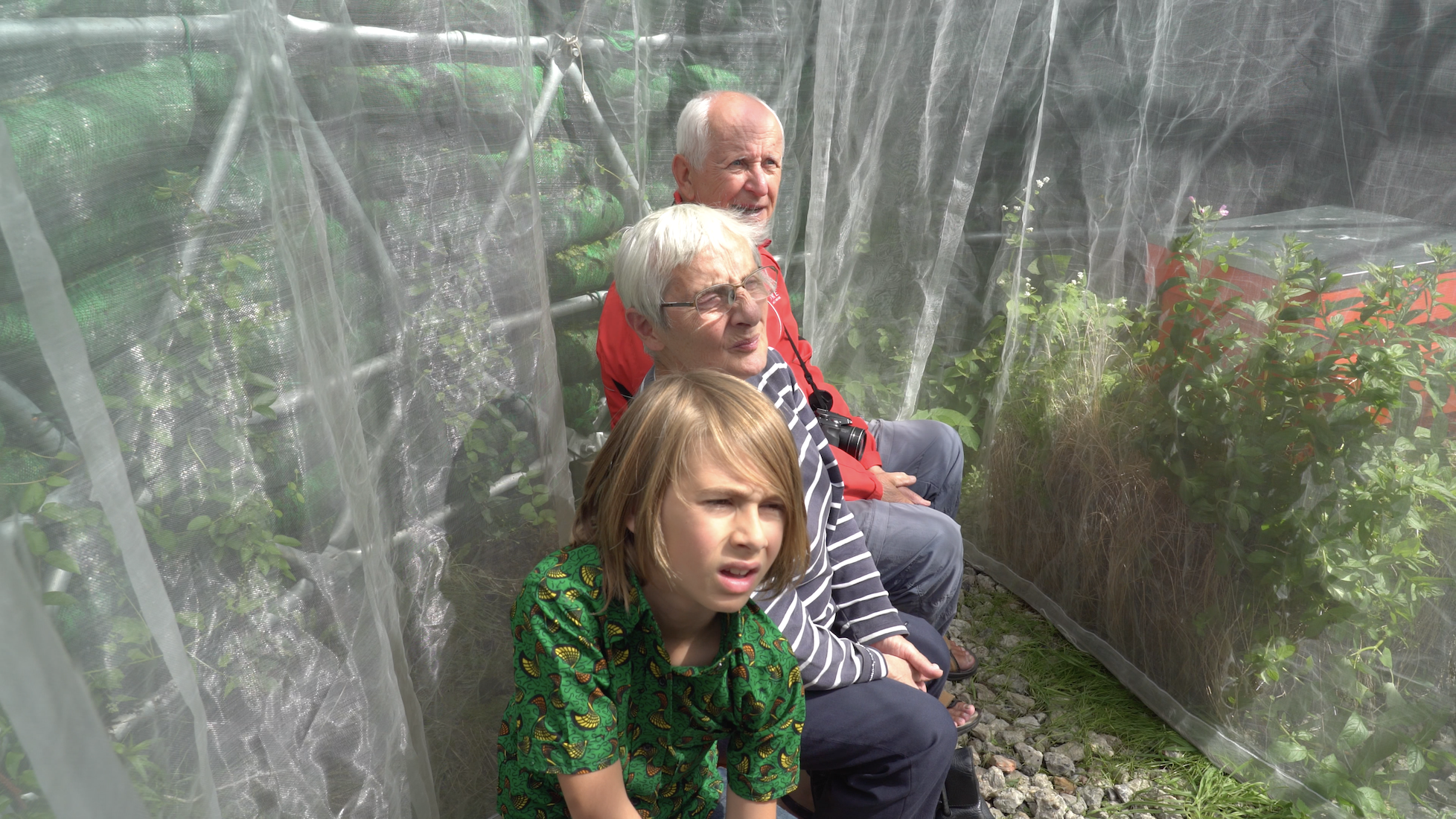Reconnecting with nature
Beesphere
Cultural ecosystem for people and pollinators
Beesphere is a cultural ecosystem led by artists, cultural workers, and landscape architects. We design social art spaces that connect people with pollinators. We build pavilions for honeybees, create hope spots rich in nectar and pollen, and develop new pollinator projects through spontaneous, social, innovative, and participatory collaborations, ignited by our 'swarming intelligence'.
Netherlands
National
Mainly urban
It refers to other types of transformations (soft investment)
Yes
2024-12-31
No
No
No
As an individual
Since at least 9,000 years ago, humans have shared a sacred bond with a remarkable and enigmatic insect—the bee. Revered across cultures and essential to our ecosystems, its wellbeing is intertwined with our own survival. It is time to restore this deep-seated understanding.
Beesphere is a long-term project tackling the bee and pollinator crisis through collaborations with artists and creatives. Our collective works in public spaces alongside locals, start-ups, municipalities, newcomers, children, social labor organizations, and scientists—forming swarm coalitions that share our values and contribute to our social, artistic, and ecological mission.
We develop and test educational and cultural programs on biodiversity and pollinators for people of all ages. Participating artists engage with scientists specializing in wild bees and honeybees to create thought-provoking and innovative works. Small start-ups and companies join our programs to promote their products, while others contribute by testing new green or circular technologies when we build structures.
Beesphere has evolved into a thriving ecosystem—connecting bees, pollinators, and people. Through our work, we are shaping a new culture for pollinators and beekeeping, rooted in values, sustainability, and deeper connections with nature.
A Beesphere project, with parallel activities on a vacant lot, museum, or public space, can revitalize a local community within 2 to 3 years. These activities include:
-Social and cultural entrepreneurship for biodiversity and pollinators (green startups, eco-art, pilot projects, innovations, etc.)
-Social labor and activation, including integration programs for newcomers
-Education & eco-literacy through lectures, workshops, and hands-on learning
-Boosting creativity through artistic collaborations and interventions
-Citizen science initiatives to engage the community in ecological research
-Soil restoration and enrichment to improve long-term sustainability
Beesphere is a long-term project tackling the bee and pollinator crisis through collaborations with artists and creatives. Our collective works in public spaces alongside locals, start-ups, municipalities, newcomers, children, social labor organizations, and scientists—forming swarm coalitions that share our values and contribute to our social, artistic, and ecological mission.
We develop and test educational and cultural programs on biodiversity and pollinators for people of all ages. Participating artists engage with scientists specializing in wild bees and honeybees to create thought-provoking and innovative works. Small start-ups and companies join our programs to promote their products, while others contribute by testing new green or circular technologies when we build structures.
Beesphere has evolved into a thriving ecosystem—connecting bees, pollinators, and people. Through our work, we are shaping a new culture for pollinators and beekeeping, rooted in values, sustainability, and deeper connections with nature.
A Beesphere project, with parallel activities on a vacant lot, museum, or public space, can revitalize a local community within 2 to 3 years. These activities include:
-Social and cultural entrepreneurship for biodiversity and pollinators (green startups, eco-art, pilot projects, innovations, etc.)
-Social labor and activation, including integration programs for newcomers
-Education & eco-literacy through lectures, workshops, and hands-on learning
-Boosting creativity through artistic collaborations and interventions
-Citizen science initiatives to engage the community in ecological research
-Soil restoration and enrichment to improve long-term sustainability
Innovation
Inclusion
Pollinator Crisis
Biodiversity
Culture
We address the pollinator crisis by enhancing soil quality, planting flower bulbs, sowing flowering plants, and introducing nectar- and pollen-rich shrubs—creating a more abundant food supply. Through thoughtful landscape alterations and sculptural interventions, we also provide essential nesting opportunities for pollinators. Various pollinator strategies, such as the exemplary Irish Pollinator Plan, highlight food availability and habitat restoration as key objectives in tackling this crisis. We approach this challenge in our own way, integrating art into ecologically enriched sites to foster new relationships between humans and nature.
Our projects are deeply collaborative, engaging local communities, social labor initiatives, and newcomers who learn Dutch while actively participating. Art fuels this swarm of people, playing a central role—both by making our interventions visually compelling and by serving as a social catalyst that empowers communities. Across Europe, vast areas of degraded land, vacant fields, and underutilized plots await cultural and ecological activation. Beesphere is uniquely positioned to intervene as a nomadic cultural ecosystem.
If Beesphere were to evolve into a social labor enterprise—combining art, social employment, and education for companies, museums, and urban renewal projects—we could contribute meaningfully to the Green Deal and the Nature Restoration Law in a self-sustaining way. If we win the New Bauhaus Prize, we will invest the budget in young marketers, graphic design, develop and outstandig portfolio and work on partnerships and new customer acquisition.
Our projects are deeply collaborative, engaging local communities, social labor initiatives, and newcomers who learn Dutch while actively participating. Art fuels this swarm of people, playing a central role—both by making our interventions visually compelling and by serving as a social catalyst that empowers communities. Across Europe, vast areas of degraded land, vacant fields, and underutilized plots await cultural and ecological activation. Beesphere is uniquely positioned to intervene as a nomadic cultural ecosystem.
If Beesphere were to evolve into a social labor enterprise—combining art, social employment, and education for companies, museums, and urban renewal projects—we could contribute meaningfully to the Green Deal and the Nature Restoration Law in a self-sustaining way. If we win the New Bauhaus Prize, we will invest the budget in young marketers, graphic design, develop and outstandig portfolio and work on partnerships and new customer acquisition.
We use aesthetics to strengthen social systems that promote nature inclusivity within local communities, encouraging them to become more receptive to biodiversity, and ecological awareness. Through workshops, lectures, events, and educational programs, we foster 'ecoliteracy' and active engagement. Our approach to aesthetics adapts to the selected artists and the intended impact on the social fabric—ranging from classical art aesthetics to participatory and social art that create meaningful interactions. In our first pilot project in Gentbrugge, Belgium, we developed a central pavilion: a dome structure with a living, flowering outer shell that housed native black honeybees. Built collaboratively with neighborhood residents from diverse social backgrounds, the project engaged children with learning disabilities, who planted 1,200 young plants in the structure’s outer shell, while newcomers installed an irrigation system as part of a Dutch language learning program. A local carpenter crafted a door from salvaged wood, and children took part in insect-themed street art workshops. Beyond the structure itself, we organized a bee brunch, supported a young entrepreneur in launching an on-site plant nursery, and facilitated engagement through art and ecology. The pavilion became a meeting point and educational hub, guided by our beekeeper.
After two years, we relocated and transformed the sculpture in Utrecht, the Netherlands. Using the same skeletal structure, we rebuilt it as a circular pavilion with salvaged construction wood and 3,000 discarded dining plates, once again creating a flowering, green outer shell with an integrated irrigation system. As before, we collaborated with newcomers learning the local language, partnered with the Art & Society division of Utrecht University, developed an educational game, launched a parallel program called Pollinations featuring works by Dutch and Belgian artists, and participated a workshop for young landscape architects.
After two years, we relocated and transformed the sculpture in Utrecht, the Netherlands. Using the same skeletal structure, we rebuilt it as a circular pavilion with salvaged construction wood and 3,000 discarded dining plates, once again creating a flowering, green outer shell with an integrated irrigation system. As before, we collaborated with newcomers learning the local language, partnered with the Art & Society division of Utrecht University, developed an educational game, launched a parallel program called Pollinations featuring works by Dutch and Belgian artists, and participated a workshop for young landscape architects.
As open space becomes increasingly scarce, many people in disadvantaged communities lack access to private green spaces. Additionally, newcomers often face language barriers and lack networks, making it harder for them to integrate and embrace European value systems. Beesphere provides spaces of belonging, where, through participatory efforts, the boundaries between social layers are blurred, fostering new networks, collaborations, and better opportunities in the labor market.
Beesphere creates experimental and productive hotspots for newcomers, artists, locals, local governments, and scientists to work together. To develop recipes for a better, stronger, more beautiful, and resilient Europe, we need to adopt a new way of cooking—one that creates kitchens accessible to everyone. This project contributes to bottom-up innovation and hands-on learning.
We also noticed that labour organisation often send job seekers to our project because they feel insecure on the job market. Green Labour and volonteering helps people that need a mental reboot and re-activation.
Because we are not elitist but social artists, we help restore their work skills and lower the threshold to a new job.
Beyond the job market, we also provide opportunities for startups to test their sustainable business concepts on our site without paying rent—provided they actively contribute to addressing the pollinator crisis. Emerging artists are also welcome to experiment with new work or create original installations, as long as they contribute to a culture that supports pollinators.
Beesphere creates experimental and productive hotspots for newcomers, artists, locals, local governments, and scientists to work together. To develop recipes for a better, stronger, more beautiful, and resilient Europe, we need to adopt a new way of cooking—one that creates kitchens accessible to everyone. This project contributes to bottom-up innovation and hands-on learning.
We also noticed that labour organisation often send job seekers to our project because they feel insecure on the job market. Green Labour and volonteering helps people that need a mental reboot and re-activation.
Because we are not elitist but social artists, we help restore their work skills and lower the threshold to a new job.
Beyond the job market, we also provide opportunities for startups to test their sustainable business concepts on our site without paying rent—provided they actively contribute to addressing the pollinator crisis. Emerging artists are also welcome to experiment with new work or create original installations, as long as they contribute to a culture that supports pollinators.
Citizen Involvement & Benefits:
Beesphere actively involved citizens at multiple levels, from hands-on participation to co-creation. In Gentbrugge, local residents helped build the beepod, while children played on-site and took part in bee-themed arts and crafts activities. The project gave the community a stronger connection to biodiversity, teaching them about pollinators and ecological design in an engaging way. Social labor initiatives and newcomers in Ghent also contributed, fostering inclusion and skill development.
Role of Civil Society & Their Impact:
Civil society organizations played a crucial role by bringing in expertise, resources, and participants. Buso Sint Gregorius School involved children with learning disabilities in planting activities, while a local garden architect helped create an insect arena. A local entrepreneur initiated a plant nursery within the project, showing its economic and ecological potential. In Utrecht, partnerships with Utrecht University and Young NVTL led to artistic exchanges and innovative landscape designs, expanding the project's reach.
Overall Impact on the Project:
Community involvement turned Beesphere into more than just a biodiversity initiative—it became a social catalyst, strengthening local engagement, ecological awareness, and interdisciplinary collaboration. By fostering ownership, participation, and cross-pollination of ideas, the project inspired citizens and organizations to integrate bee-centric thinking into their own work and communities.
Beesphere actively involved citizens at multiple levels, from hands-on participation to co-creation. In Gentbrugge, local residents helped build the beepod, while children played on-site and took part in bee-themed arts and crafts activities. The project gave the community a stronger connection to biodiversity, teaching them about pollinators and ecological design in an engaging way. Social labor initiatives and newcomers in Ghent also contributed, fostering inclusion and skill development.
Role of Civil Society & Their Impact:
Civil society organizations played a crucial role by bringing in expertise, resources, and participants. Buso Sint Gregorius School involved children with learning disabilities in planting activities, while a local garden architect helped create an insect arena. A local entrepreneur initiated a plant nursery within the project, showing its economic and ecological potential. In Utrecht, partnerships with Utrecht University and Young NVTL led to artistic exchanges and innovative landscape designs, expanding the project's reach.
Overall Impact on the Project:
Community involvement turned Beesphere into more than just a biodiversity initiative—it became a social catalyst, strengthening local engagement, ecological awareness, and interdisciplinary collaboration. By fostering ownership, participation, and cross-pollination of ideas, the project inspired citizens and organizations to integrate bee-centric thinking into their own work and communities.
Local: At the local level, we worked closely with neighborhood talent, such as a local carpenter who crafted a door from salvaged wood, we engaged the community through an introductory event. This created a strong sense of ownership and community involvement. The local residents not only contributed their skills, but their engagement also helped raise awareness about the importance of bees and biodiversity, leading to a more sustainable and enduring project presence.
Regional: At the regional level, we partnered with organizations offering specialized technical expertise. A structural engineer helped design the iron dome for the beepod, and a green wall research center ensured the correct soil composition and plant choices. Their involvement added significant technical value to the project, ensuring its ecological integrity and long-term sustainability. The collaboration with scientists also helped us gain credibility and improve the quality of our work, making the project more impactful for local biodiversity.
National: Nationally, we engaged with policymakers and funding organizations like the National Lottery, whose support went beyond traditional logo sponsorship. The Lottery wanted to demonstrate its commitment to environmental issues, which led to their involvement in the opening event and a national TV broadcast. Their visibility and support not only increased the project's public awareness, but it also helped us build credibility and attract further interest in our cause.
European: On a European level, we participated in a workshop with Latvian policymakers to explore how our project could serve as an innovative policy tool. We also presented to the EU Directorate-General, focusing on policy innovation and Green Deal citizen involvement. The added value here was that the project could serve as an experimental policy probe.
Regional: At the regional level, we partnered with organizations offering specialized technical expertise. A structural engineer helped design the iron dome for the beepod, and a green wall research center ensured the correct soil composition and plant choices. Their involvement added significant technical value to the project, ensuring its ecological integrity and long-term sustainability. The collaboration with scientists also helped us gain credibility and improve the quality of our work, making the project more impactful for local biodiversity.
National: Nationally, we engaged with policymakers and funding organizations like the National Lottery, whose support went beyond traditional logo sponsorship. The Lottery wanted to demonstrate its commitment to environmental issues, which led to their involvement in the opening event and a national TV broadcast. Their visibility and support not only increased the project's public awareness, but it also helped us build credibility and attract further interest in our cause.
European: On a European level, we participated in a workshop with Latvian policymakers to explore how our project could serve as an innovative policy tool. We also presented to the EU Directorate-General, focusing on policy innovation and Green Deal citizen involvement. The added value here was that the project could serve as an experimental policy probe.
Knowledge on Pollinators: When artists collaborate with us, they need to immerse themselves in the world of bees. To support them in this process, we partner with scientists who provide valuable insights. For example, we facilitated an exchange between a honeybee specialist and an olfactory artist exploring the role of scents in the landscape and their significance for honeybees. These interdisciplinary encounters help shape artistic concepts rooted in ecological knowledge.
Knowledge on Green Innovations
Providing shelter and food for bees requires long-lasting, and biodiverse planting strategies. We collaborate with regional landscape organizations to design hope spots—safe havens for bees and pollinators. For instance, a local landscape architect designed a highly diverse flowering plot with an extended blooming season, ensuring continuous nectar availability. This approach enhances both biodiversity and ecosystem resilience.
Knowledge on Social Cohesion
In Gent, we worked closely with the neighborhood and participation service, which introduced us to key community stakeholders. Their guidance helped us integrate into the local social fabric, ensuring that the project was embraced by the community. Having a local partner with deep knowledge of neighborhood dynamics is a major asset in fostering participation and long-term engagement.
Circular Knowledge
For our second project, we aimed to reuse as much material as possible from our first temporary installation. To achieve this, we partnered with Superuse, an architectural firm specializing in circular design. Their expertise helped us construct the new bee embassy using repurposed materials, significantly reducing our environmental footprint.
Inclusive Knowledge
Whenever possible, we collaborate with organizations that support social inclusion. In Gent, we worked with Refu-Interim, an organization that connects newcomers with job opportunities, and in Utrecht, we engaged similar partners t
Knowledge on Green Innovations
Providing shelter and food for bees requires long-lasting, and biodiverse planting strategies. We collaborate with regional landscape organizations to design hope spots—safe havens for bees and pollinators. For instance, a local landscape architect designed a highly diverse flowering plot with an extended blooming season, ensuring continuous nectar availability. This approach enhances both biodiversity and ecosystem resilience.
Knowledge on Social Cohesion
In Gent, we worked closely with the neighborhood and participation service, which introduced us to key community stakeholders. Their guidance helped us integrate into the local social fabric, ensuring that the project was embraced by the community. Having a local partner with deep knowledge of neighborhood dynamics is a major asset in fostering participation and long-term engagement.
Circular Knowledge
For our second project, we aimed to reuse as much material as possible from our first temporary installation. To achieve this, we partnered with Superuse, an architectural firm specializing in circular design. Their expertise helped us construct the new bee embassy using repurposed materials, significantly reducing our environmental footprint.
Inclusive Knowledge
Whenever possible, we collaborate with organizations that support social inclusion. In Gent, we worked with Refu-Interim, an organization that connects newcomers with job opportunities, and in Utrecht, we engaged similar partners t
Each new Beesphere creation or project demands fresh solutions while building on past experiences and an ever-expanding network. Along the way, we encounter individuals and organizations that were not part of the original plan, reinforcing Beesphere’s role as both a social catalyst for people and bees and an innovative network creator. We have coined this specific value as Beesphere’s swarming intelligence.
Becoming a superorganism requires organic, decentralized ways of organizing and building capacity. Beesphere does not rely on classical methods; instead, it mirrors the intelligence of a beehive: we are beecentric, grow stronger through collective effort, and learn from each other.
Compared to traditional initiatives—such as national pollinator plans, beekeeper organizations, or environmental campaigns—Beesphere has a reproductive potential, continuously generating new ideas, partnerships, and creative bee-centered communities. Art and creativity play a central role in bridging people, pollinators, and diverse fields of knowledge. Our activities inspire and expand eco-literacy, leading to invitations from art schools, universities, policymaking institutes, cultural institutions and even a film festival.
We are increasingly welcomed by art museums and art schools, integrating eco-literacy into the curriculum of the cultural sector. To foster a truly bee-friendly culture, we must create new art, traditions, language, and rituals that embed biodiversity into everyday life. In this way, Beesphere’s vision resonates with UNESCO’s Cultural Biodiversity Program and has the potential to inspire other cultural ecosystems beyond pollinators.
Becoming a superorganism requires organic, decentralized ways of organizing and building capacity. Beesphere does not rely on classical methods; instead, it mirrors the intelligence of a beehive: we are beecentric, grow stronger through collective effort, and learn from each other.
Compared to traditional initiatives—such as national pollinator plans, beekeeper organizations, or environmental campaigns—Beesphere has a reproductive potential, continuously generating new ideas, partnerships, and creative bee-centered communities. Art and creativity play a central role in bridging people, pollinators, and diverse fields of knowledge. Our activities inspire and expand eco-literacy, leading to invitations from art schools, universities, policymaking institutes, cultural institutions and even a film festival.
We are increasingly welcomed by art museums and art schools, integrating eco-literacy into the curriculum of the cultural sector. To foster a truly bee-friendly culture, we must create new art, traditions, language, and rituals that embed biodiversity into everyday life. In this way, Beesphere’s vision resonates with UNESCO’s Cultural Biodiversity Program and has the potential to inspire other cultural ecosystems beyond pollinators.
Our project is rooted in participatory design, ensuring that local communities play an active role in shaping their environment. Our approach follows a accessible multilayered process:
1. Participatory Design first:
We prioritize collaborative engagement by forming temporary coalitions with locally integrated groups:
-Direct partnerships with local residents to ensure community ownership.
-Collaboration with intermediary organizations such as city participation services, NGOs, and cultural hubs.
-Leveraging existing networks of ecological, artistic, and social innovation experts.
2. The Beesphere “Swarming Intelligence” Model:
-Our approach mirrors the collective intelligence of pollinators, where adaptability, knowledge-sharing, and organic collaboration drive project success.
3. Flexible, evolving structures:
- We adapt to local dynamics rather than imposing rigid frameworks.
-Open and iterative development – each project benefits from continuous input and feedback loops from its stakeholders.
3. Balancing Participation, Innovation & Social Cohesion
-Participation: We co-create with local actors, ensuring inclusivity and long-term impact.
-Innovation: We integrate nature-based solutions, art, and ecological design to redefine urban biodiversity.
-Social Cohesion: We connect diverse groups through a shared ecological and artistic vision, strengthening community ties.
4. Structured Yet Adaptive Process
-Introductory Meeting – Engaging local stakeholders and mapping the landscape.
-Thematic Brainstorm – Identifying key community needs, creative resources, and ecological opportunities.
-Local Human Capital Scan – Assessing local knowledge, skills, and engagement potential.
-Project Design & Implementation – Translating insights into site-specific, people-driven interventions.
-This methodology ensures every Beesphere project is deeply embedded in its local context, fostering sustainable, innovative, and socially urban ecosystem
1. Participatory Design first:
We prioritize collaborative engagement by forming temporary coalitions with locally integrated groups:
-Direct partnerships with local residents to ensure community ownership.
-Collaboration with intermediary organizations such as city participation services, NGOs, and cultural hubs.
-Leveraging existing networks of ecological, artistic, and social innovation experts.
2. The Beesphere “Swarming Intelligence” Model:
-Our approach mirrors the collective intelligence of pollinators, where adaptability, knowledge-sharing, and organic collaboration drive project success.
3. Flexible, evolving structures:
- We adapt to local dynamics rather than imposing rigid frameworks.
-Open and iterative development – each project benefits from continuous input and feedback loops from its stakeholders.
3. Balancing Participation, Innovation & Social Cohesion
-Participation: We co-create with local actors, ensuring inclusivity and long-term impact.
-Innovation: We integrate nature-based solutions, art, and ecological design to redefine urban biodiversity.
-Social Cohesion: We connect diverse groups through a shared ecological and artistic vision, strengthening community ties.
4. Structured Yet Adaptive Process
-Introductory Meeting – Engaging local stakeholders and mapping the landscape.
-Thematic Brainstorm – Identifying key community needs, creative resources, and ecological opportunities.
-Local Human Capital Scan – Assessing local knowledge, skills, and engagement potential.
-Project Design & Implementation – Translating insights into site-specific, people-driven interventions.
-This methodology ensures every Beesphere project is deeply embedded in its local context, fostering sustainable, innovative, and socially urban ecosystem
Cities can integrate Beesphere as an incentivized model in urban planning. Some example aspects:
1. Beesphere as an incentive for project developers:
– Cities can offer free soil enhancement, or sustainable credits for incorporating a professional Beesphere system with multi-stakeholder collaborations
– Further engage landscape architects, artists, and local communities in participatory design.
– Beesphere could intervene in short-term city development projects and long-term sustainable housing initiatives.
2. Green Business Promotion:
Beesphere can serve as an experimental hub for greening companies and regenerative businesses:
– Showcasing pollinator-friendly solutions
– A platform for innovative urban greening, biodiversity-focused architecture, and bio-based materials.
– Activating temporary spaces – transforming underutilized areas into living labs for ecological design.
Creating a knowledge-sharing ecosystem
– Encouraging collaborations between businesses, researchers, and ecological practitioners.
3. Social Labor & Inclusive Employment
All Beesphere constructions should be built through social labor programs, ensuring inclusivity in the green economy.
4. European partnerships – Developing long-term agreements with firms and networks across Europe to scale training and employment programs.
Triple impact investment – Strengthening social inclusion, labor force development, and nature-based solutions.
4. Net Biodiversity Increase & Ecological Accountability
Baseline biodiversity assessments
– Conducting a zero measurement before initiating a project to track biodiversity improvements over time.
Integrated sustainability reporting
–Scaling across industries
– Encouraging replication in construction, urban planning, and green infrastructure projects.
5. Education & Public Engagement
Beesphere has successfully developed interactive learning program: that can be replicated:
- Pollination Escape Game
- Art & Ecology Workshops
1. Beesphere as an incentive for project developers:
– Cities can offer free soil enhancement, or sustainable credits for incorporating a professional Beesphere system with multi-stakeholder collaborations
– Further engage landscape architects, artists, and local communities in participatory design.
– Beesphere could intervene in short-term city development projects and long-term sustainable housing initiatives.
2. Green Business Promotion:
Beesphere can serve as an experimental hub for greening companies and regenerative businesses:
– Showcasing pollinator-friendly solutions
– A platform for innovative urban greening, biodiversity-focused architecture, and bio-based materials.
– Activating temporary spaces – transforming underutilized areas into living labs for ecological design.
Creating a knowledge-sharing ecosystem
– Encouraging collaborations between businesses, researchers, and ecological practitioners.
3. Social Labor & Inclusive Employment
All Beesphere constructions should be built through social labor programs, ensuring inclusivity in the green economy.
4. European partnerships – Developing long-term agreements with firms and networks across Europe to scale training and employment programs.
Triple impact investment – Strengthening social inclusion, labor force development, and nature-based solutions.
4. Net Biodiversity Increase & Ecological Accountability
Baseline biodiversity assessments
– Conducting a zero measurement before initiating a project to track biodiversity improvements over time.
Integrated sustainability reporting
–Scaling across industries
– Encouraging replication in construction, urban planning, and green infrastructure projects.
5. Education & Public Engagement
Beesphere has successfully developed interactive learning program: that can be replicated:
- Pollination Escape Game
- Art & Ecology Workshops
1. Pollinator Crisis, Food Security & Biodiversity Restoration:
-Over 75% of global crops depend on pollinators, making their decline not only an ecological issue but also an economic crisis that threatens food production. -Protecting pollinators means restoring degraded soils, creating pesticide-free, pollen- and nectar-rich habitats, and integrating them into urban environments. By placing these biodiverse spaces in densely populated areas, we reconnect humans with pollinators, fostering awareness and stewardship.
-Through education, community and artistic projects, we translate these challenges into engaging, actionable solutions tailored to different audiences.
2. EU Nature Restoration Law
-Beesphere actively contributes to biodiversity restoration by working with native black honey bees (Apis mellifera mellifera), a species crucial to Europe's ecological heritage but increasingly threatened by habitat loss and hybridization.
-By supporting local conservation programs dedicated to these native bees, we help preserve their genetic diversity and reinforce ecosystem resilience.
-Beyond honeybees, we focus on habitat improvement for wild and solitary bees, which play a critical role in native plant pollination and local biodiversity.
-Our projects align with the goals of the EU Nature Restoration Law, which mandates the restoration of degraded ecosystems and the protection of pollinator populations.
-By integrating pollinator-friendly landscapes into urban and rural settings, Beesphere contributes to long-term ecological recovery and nature-based climate adaptation strategies.
3. Integration, Inclusivity & Regenerative Labour
-With climate change driving mass migration due to food shortages, economic shifts, and political instability, integration challenges will become more pressing.
- A resilient, biodiverse city needs not just green spaces, but also knowledge and labor to sustain them.
-Over 75% of global crops depend on pollinators, making their decline not only an ecological issue but also an economic crisis that threatens food production. -Protecting pollinators means restoring degraded soils, creating pesticide-free, pollen- and nectar-rich habitats, and integrating them into urban environments. By placing these biodiverse spaces in densely populated areas, we reconnect humans with pollinators, fostering awareness and stewardship.
-Through education, community and artistic projects, we translate these challenges into engaging, actionable solutions tailored to different audiences.
2. EU Nature Restoration Law
-Beesphere actively contributes to biodiversity restoration by working with native black honey bees (Apis mellifera mellifera), a species crucial to Europe's ecological heritage but increasingly threatened by habitat loss and hybridization.
-By supporting local conservation programs dedicated to these native bees, we help preserve their genetic diversity and reinforce ecosystem resilience.
-Beyond honeybees, we focus on habitat improvement for wild and solitary bees, which play a critical role in native plant pollination and local biodiversity.
-Our projects align with the goals of the EU Nature Restoration Law, which mandates the restoration of degraded ecosystems and the protection of pollinator populations.
-By integrating pollinator-friendly landscapes into urban and rural settings, Beesphere contributes to long-term ecological recovery and nature-based climate adaptation strategies.
3. Integration, Inclusivity & Regenerative Labour
-With climate change driving mass migration due to food shortages, economic shifts, and political instability, integration challenges will become more pressing.
- A resilient, biodiverse city needs not just green spaces, but also knowledge and labor to sustain them.
Beesphere has generated significant ecological, social, and economic impact through its projects, engaging diverse stakeholders, fostering biodiversity awareness, and driving innovation.
1. Investment & Economic Impact
Beesphere has co-funded approximately €345,000 in various nomadic art and pollinator-centric projects, including:
-The Beepod – A mobile pollinator hub integrating education and research.
-The Bee Embassy – A cultural and ecological space advocating for pollinators in urban settings.
-The Insect Arena – A design intervention showcasing insect behavior and habitat needs.
-Pollinator Street – A green corridor improving biodiversity in city environments.
-Hope Spot – A regenerative art and ecology project restoring pollinator-friendly spaces.
-Through these projects, European companies, green research centers, inclusive NGOs, and social labor organizations received assignments, fostering green employment, knowledge exchange, and sustainable business collaborations.
2. Communication & Public Engagement
Beesphere has reached over 300,000 people through its programs, media appearances, and educational initiatives, including:
-Cinema lectures (250 attendees each).
-National TV broadcast (VRT) featuring a 4-minute segment (~200,000 viewers).
-Radio broadcast on the Day of Biodiversity (~20,000 listeners).
-National and regional media coverage, including articles on Pollinator Street.
-Film participation – Featured in Not Your Bee Movie, with multiple local and online screenings (~1,000 views).
-Regional communication efforts in Utrecht programs.
-Pollinations program in Utrecht engaging ~10,000 visitors.
-Academic involvement – Participation in Studium Generale (Utrecht University), lectures for universities, governments, and non-profits.
3. Biodiversity Awareness & Education
-Beepod Program – Monthly beekeeper education sessions.
-Community Events – Two children’s events promoting pollinator conservation.
1. Investment & Economic Impact
Beesphere has co-funded approximately €345,000 in various nomadic art and pollinator-centric projects, including:
-The Beepod – A mobile pollinator hub integrating education and research.
-The Bee Embassy – A cultural and ecological space advocating for pollinators in urban settings.
-The Insect Arena – A design intervention showcasing insect behavior and habitat needs.
-Pollinator Street – A green corridor improving biodiversity in city environments.
-Hope Spot – A regenerative art and ecology project restoring pollinator-friendly spaces.
-Through these projects, European companies, green research centers, inclusive NGOs, and social labor organizations received assignments, fostering green employment, knowledge exchange, and sustainable business collaborations.
2. Communication & Public Engagement
Beesphere has reached over 300,000 people through its programs, media appearances, and educational initiatives, including:
-Cinema lectures (250 attendees each).
-National TV broadcast (VRT) featuring a 4-minute segment (~200,000 viewers).
-Radio broadcast on the Day of Biodiversity (~20,000 listeners).
-National and regional media coverage, including articles on Pollinator Street.
-Film participation – Featured in Not Your Bee Movie, with multiple local and online screenings (~1,000 views).
-Regional communication efforts in Utrecht programs.
-Pollinations program in Utrecht engaging ~10,000 visitors.
-Academic involvement – Participation in Studium Generale (Utrecht University), lectures for universities, governments, and non-profits.
3. Biodiversity Awareness & Education
-Beepod Program – Monthly beekeeper education sessions.
-Community Events – Two children’s events promoting pollinator conservation.

